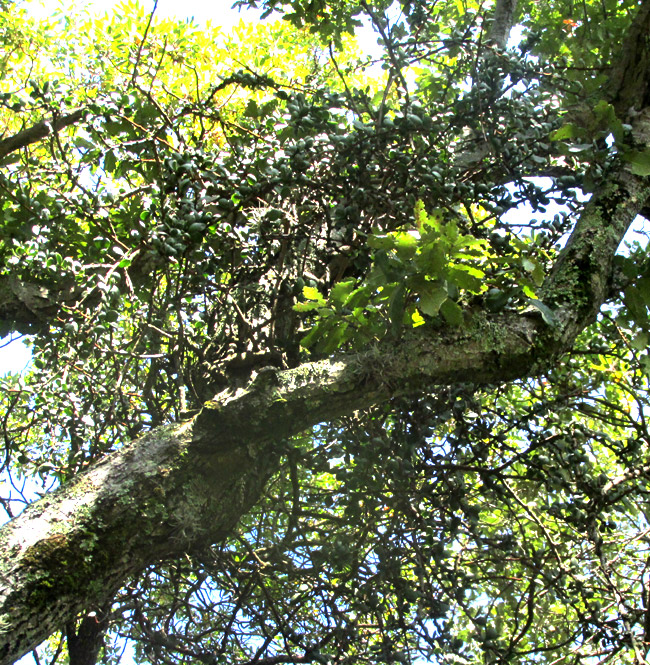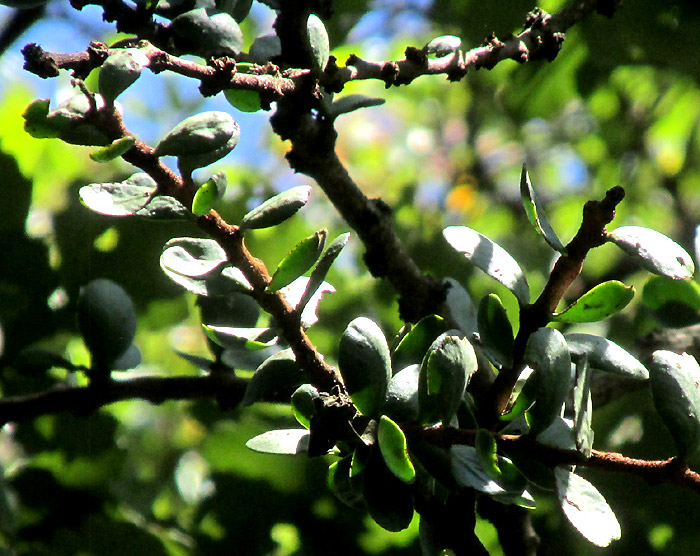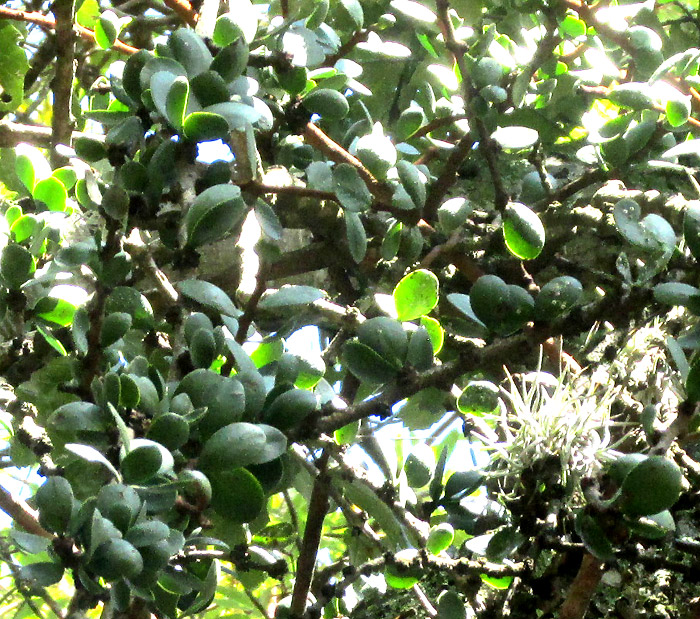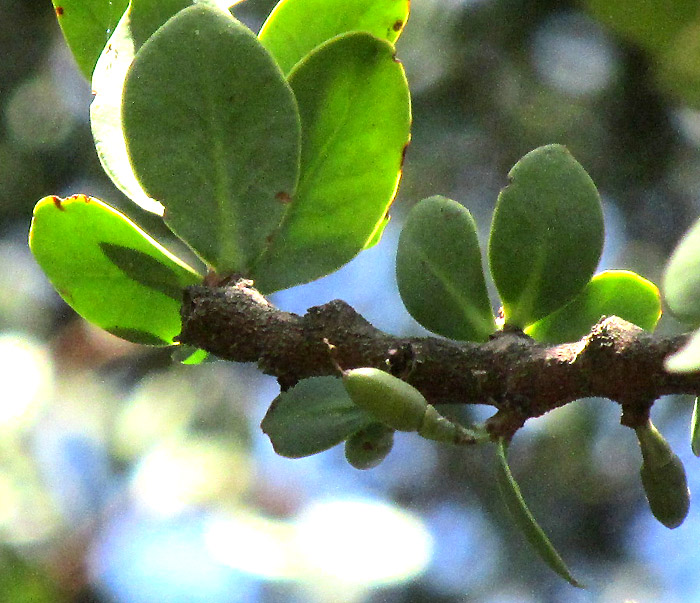Excerpts from Jim Conrad's
Naturalist Newsletter
Entry dated November 10, 2023, from notes taken from ridge with secondary oak forest about 300m west of Cascadas de La Piedad waterfall 3kms NW of the community of San Pablo, municipality of Almeaco de Bonfil; N20.1002°, W100.0067°, elevation 2360 meters (7750ft); extreme southern Querétaro state, MÉXICO
CLADOCOLEA DIVERSIFOLIA


At the edge of a wooded ravine, the massive lower branches of a relatively large oak tree bore the dark tangle of stems and small leaves seen above, apparently some kind of mistletoe. At the right, an enlarged part of the above picture shows the oak's leaves, indicating that it was the commonly occurring Quercus obtusata. The mistletoe's cluster of stems, about the size of a kitchen table, was too high for a close look, but my camera's modest telephoto feature revealed what's seen below:

The small leaves mostly were rounded at their tips, and diminished in width gradually to their attachment with the brown stem. Leaves tend to arise singly at stem nodes, but sometimes they're in pairs opposite one another.

Seeing no flowers or fruits in the previous picture, the above portion of the mistletoe body was photographed, because from below the densely clustered leaves looked like clusters of green, immature, grape-like fruits. However, later, no flower or fruit was to be seen. I wondered if their similarity to a cluster of immature green fruits might distract birds who otherwise would feed on the plant's green, immature fruits.

Luckily, the above single, immature, ellipsoid fruit did turn up, accidentally included in another picture. Features important for identification to species level include that the dark, dried-up style issuing from the fruit's tip is slightly curved but not at all kinked or zigzagging. The fruit's base arises from a short pedicel, not directly from the stem.
The Mistletoe Family, the Loranthaceae, is represented in this part of upland central Mexico known as the Bajío Region by three genera, none of which includes species of what northerners visualize as "Christmas mistletoes," the genus Loranthus. The genera in this area are easy to distinguish if flowering material is handy, but since our plant bore no flowers, the best field mark for the genus was that the leaves mostly occurred singly at stem nodes, and the fruit arose from atop a short pedicel. This species proved to be dioecious -- plants bearing either male or female flowers, but not both -- so we were lucky to have a female.
This turns out to be the mistletoe genus Cladocolea, known by no English name. The species earlier was assigned to the European Christmas mistletoe genus Loranthus, so there's nothing against just calling it a mistletoe. Currently the genus Cladocolea is thought to embrace 30 species, all occurring from Mexico south into the northern half of South America.
The 2016 master's thesis by Luis Gil Galván González entitled "El Género Cladocolea Tiegh. (Loranthaceae) en México" tells us that of the 30 Cladocolea species, 19 are native to Mexico. Of those 19, the 2020 treatment of the Mistletoe Family in the Flora del Bajío documents for our upland central Mexican region three species. Of those three species, if your plant's leaves are not hairy, the fruit's style is curved but not contorted, and the fruit arises atop a short pedicel, as with our plant, you have CLADOCOLEA DIVERSIFOLIA.
Cladocolea diversifolia parasitizes various oak species, of which our bush's host is one of them, Quercus obtusata. Our mistletoe taxon is endemic to oak and oak-pine forests from our location in southern Querétaro state, south through the Mexico City area, to northern Michoacán. That's a fairly limited distribution area. In fact, such small distribution areas appear to be typical for Mexican species of Cladocolea.
This is one of those species about which it's hard to find any literature mentioning anything other than its occurrence in certain places. It's been documented on oak trees in parks of Mexico City, and there are papers advising which chemicals to use to get rid of it. Mistletoes always get bad press.
I was glad to see it, though, and breathe some of the oxygen it was producing, and probably the bird who eventually eats the ripe fruit with its single seed will be pleased to have it.